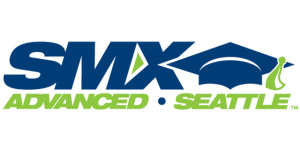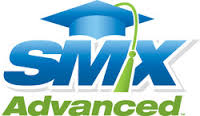 One of the big risks you run when you attend a lot of search marketing conferences is the issue of hearing the same things over and over again. I came out to this year’s SMX Advanced conference in Seattle with that in mind. After all, I was just at SMX East in New York in October of last year. How much could possibly change in just eight short months? Well, as you probably know, a whole lot has changed in that relatively short time, and much of that change was on the agenda at SMX Advanced. There’s a whole lot to talk about, but I’d bucket the changes into three categories: the changing face of search, the rise of Bing and the evolution of search advertising.
One of the big risks you run when you attend a lot of search marketing conferences is the issue of hearing the same things over and over again. I came out to this year’s SMX Advanced conference in Seattle with that in mind. After all, I was just at SMX East in New York in October of last year. How much could possibly change in just eight short months? Well, as you probably know, a whole lot has changed in that relatively short time, and much of that change was on the agenda at SMX Advanced. There’s a whole lot to talk about, but I’d bucket the changes into three categories: the changing face of search, the rise of Bing and the evolution of search advertising.
The Changing Face of Search
We all know that the concept of search as ten blue links in a browser will soon be a thing of the past. Gurdeep Singh Pall from Microsoft said as much at the keynote, predicting that input devices like the keyboard and mouse will be nothing but curiosities to our grandchildren. Touch screens and voice activation are already replacing those traditional means of interaction on newer devices. This makes a big difference in how search works overall. When someone talks to their computer or phone or Xbox, they do so in a natural language fashion that’s very different from typing on a keyboard or phone screen. Services like Siri (now powered by Microsoft’s Bing) and Google Now are not merely returning links to web pages in response to this new breed of queries. Instead, they’re interpreting inputs and giving back knowledge rather than mere information. Search for something like “Milwaukee Brewers roster” on Google and you won’t just get a link to the team’s page about that. Instead, you’ll get a slider powered by the knowledge graph with head shots and names that you can scroll through to find who you’re looking for.
The Rise of Bing
If you’d asked me a year ago if Bing would ever become a meaningful rival to Google, I may have chuckled. Times have changed pretty quickly on that score, though. First of all, comScore reports Bing’s highest ever search share for May with 17.4%. With Yahoo’s 12% share, you can now reach nearly a third of all searches through the newly rebranded Bing Ads platform in the US. That’s no small thing, and we at DAC are seeing results for our clients that reflect this shift in the landscape. Bing is also acting like a plucky challenger brand through campaigns like Bing it On and Scroogled. In addition, Bing is wooing search marketers by offering tools, functionality and information that Google doesn’t. Paul Corkery from Bing spoke on a panel about Amazing Search Tactics and Tools to great applause from the crowd when he catalogued these features available from Bing Ads (and not coincidentally unavailable from Adwords):
- Keyword level impression share data at a glance
- Historical quality score data
- Campaigns broken out by:
- Device (not possible on Adwords with Enhanced Campaigns)
- Partner network vs. search (never possible on Adwords)
- Operating system (never possible on Adwords)
Does all of this mean that Bing will be the dominant search engine any time soon? Yeah, probably not, but it does mean that search marketers can’t (or at least really shouldn’t) ignore what the Bing Ads platform has to offer. There’s some good stuff there, and it’s translating into compelling results in many cases.
The Evolution of Search Advertising
At SMX East in the fall, Google had just announced that the Google Shopping channel was going 100% pay-to-play and that Product Listing Ads (or PLAs) would be the only way to get product listings into their results pages. At the time, no one was really sure what this would mean for the space. Well, now that nearly a year has gone by since that announcement, there’s some meaningful data to look at, and the changes are significant. George Michie from RKG gave a talk outlining how one major eCommerce client of theirs went from getting 2% of their paid search traffic from PLAs to getting more than 58% in just a little over two years. Kate Cammilleri from REI talked about their PLA traffic and revenue both being up more than 450% year over year. Think about that. In the space of just under a year, the primary paid search channel for eCommerce players has shifted from the traditional keyword-based search advertising model to a much more opaque model in PLAs where Google is essentially deciding the queries for which your ads should display. That’s huge.
Then, of course, there’s the matter of Enhanced Campaigns. This has obviously been covered to death, so I won’t go into the implications, but we’re now starting to see some meaningful early results. In a session on that topic, Brad Geddes from Certified Knowledge and Jeff Allen from Hanapin Marketing walked through case studies of clients that they’ve switched over to Enhanced Campaigns and the results and challenges that they’ve encountered. Overall, they reported higher CPAs and some real structural headaches. This is a major shift for Google that has only been around since February, and it affects the way every search marketer sets up and manages paid search campaigns. The general feeling from the speakers and the crowd on this topic was not terribly positive, but there’s no doubt that Enhanced Campaigns are here to stay and fundamentally changing the way search marketing works. I think we all know that the pace of change in the search space has been accelerating lately, but this year’s SMX Advanced conference was a stark reminder to me of just how crazy that change has been in the space of less than a year. It’s hard to even imagine what the next eight months or so will bring, but I think it’s safe to say that they’ll hold some surprises for all of us. Personally, I can’t wait to see what we’ll be talking about at next year’s conference.
Looking to discuss ways you can improve your paid strategy? Contact us today!




